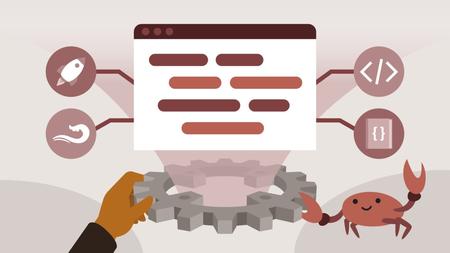
English | MP4 | AVC 1280×720 | AAC 48KHz 2ch | 1h 23m | 172 MB
Rust is quickly becoming one of the most popular and important programming languages. In this course, learn about the most important and most popular web frameworks in Rust such as Tide, warp, Rocket, and Actix. Instructor Akhil Sharma Breaks down all four of these frameworks one by one, from the basics to more intricate aspects. Get hands-on experience writing code with these Rust frameworks by following along as Akhil shows you how to write some of the most important Rust functions.
Table of Contents
Introduction
1 Supercharge your Rust framework knowledge
2 Rust web frameworks course intro
3 Prerequisites for the course
std Rust Library
4 Introduction to the standard Rust library
5 Important functions, features, and concepts
6 Building a server with the std library
7 Extra, helpful features in the std library
8 Tokio and asynchronous programming
9 Challenge Building a basic API that returns a message
10 Solution Building a basic API that returns a message
Tide A Minimal Framework
11 Introduction to Tide
12 Building a basic server with Tide
13 Routing strategies
14 Use cases and limitations of Tide
15 Challenge Create an HTTP server and validate JSON body
16 Solution Create an HTTP server and validate JSON body
warp
17 Introduction to warp
18 Building a simple server with warp
19 Building a REST API with warp
20 Challenge Use warp and Tokio together for basic async APIs
21 Solution Use warp and Tokio together for basic async APIs
Rocket
22 Introduction and the Rocket crate
23 Building a quick web server with Rocket
24 Lifecycle, routing, and mounting
25 Challenge Building a REST API server
26 Solution Building a REST API server
Actix Web
27 The Actix crate
28 Building a simple HTTP server with Actix
29 TLS feature for Actix Web
30 Keep alive and graceful shutdown
31 Challenge Build an application with multiple APIs
32 Solution Build an application with multiple APIs
Conclusion
33 Quick summary
34 Next steps and going beyond the course
Resolve the captcha to access the links!